The Independent's journalism is supported by our readers. When you purchase through links on our site, we may earn commission.
Hiking Eyjafjallajokull glacier: Iceland’s famous volcano is a perfect introduction to mountaineering
It may be best known for causing havoc to European air travel when it erupted in 2010, but this notorious glacier provides an awe-inspiring – yet manageable – day of hiking, finds Annabel Grossman

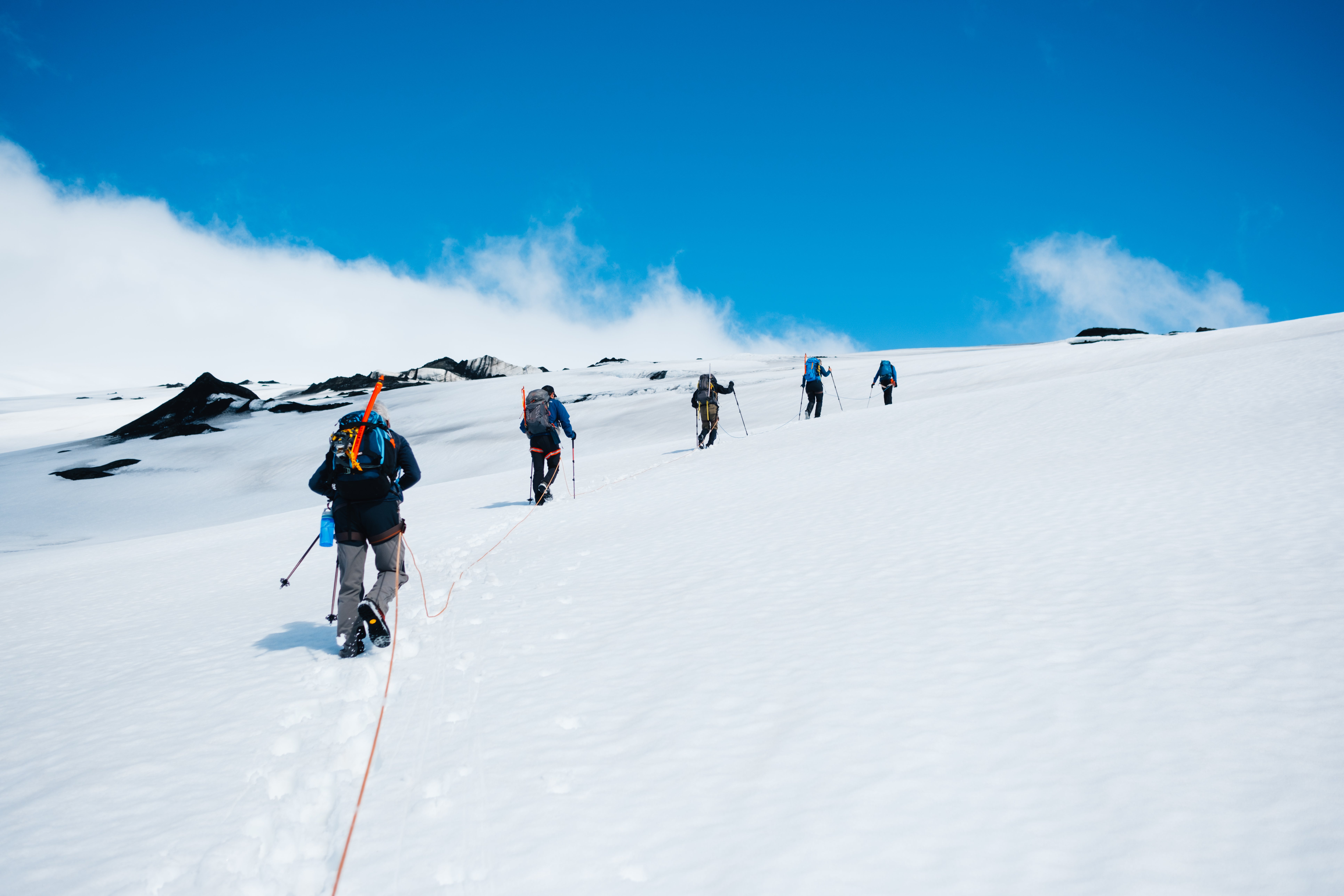
Remember when an Icelandic volcano erupted causing mass flight disruptions across Europe, with millions of people stranded as ash spewed into the air? Well, it turns out you can climb that volcano, and it might just be one of the best things you do on a trip to Iceland – even if you’re completely new to mountaineering.
Eyjafjallajokull glacier, which sits around 75 miles east of Reykjavik, is the second highest peak in Iceland and can be seen on most trips around the southwest of the country. The summit is 1,651m; for context, Ben Nevis is 1,345m, Iceland’s highest peak Hvannadalshnukur is 2,110m, Mont Blanc is 4,809m, and Kilimanjaro is a towering 5,895m.
Under the shadow of such competition, it might not sound too challenging. That said, you’ll want to take into consideration that you’ll be hiking from near enough sea level – a solid 16km or so of walking and around 1,500m elevation gain. It’s a long, tough day of hiking, and your legs will certainly feel it the day after (and possibly several more after that). But the beauty of Eyjafjallajokull is that it’s entirely manageable if you’ve got a decent level of fitness, some mental endurance and a good mountain guide.

Fortunately, when climbing Eyjafjallajokull as part of Much Better Adventures’ Iceland 3 Peaks Challenge in the spring, I had the best. Ivar Finnbogason is something of a legend in Iceland, having summited Hvannadalshnukur more than 70 times and led expeditions across the world, including in Greenland and Antarctica.
“Eyjafjallajokull is a superb introduction to the whole thing,” he tells me over recovery beers following our ascent of the volcano. “You get used to being on a rope, the height is achievable and it’s just eight to 10 hours’ hiking. That’s doable for most people – and enjoyable.”
Read more: How to see Iceland in a long weekend
His second point is key. The world of mountaineering, like many adventure sports, can be intimidating, not to mention dangerous. Although it’s foolish to underestimate any ascent, particularly one with significant elevation in a day, Eyjafjallajokull is far less punishing than most. Ivar points out that you need no technical skills and, if you hike at the right time of year, it’s unlikely you’ll need any specialist equipment. Yet you still get the rush of glacier hiking.
The start of the climb is a relatively steep ascent until you reach the glacier, when it levels out to a steady climb. Then comes hiking through deep snow and navigating crevasses and icy terrain. The views before we reached the snow line were already inspiring (Iceland truly is in a class of its own when it comes to landscapes), but the glacier itself is almost otherworldly. Moss and gentle streams give way to black volcanic rock contrasting sharply against the briliant white of the snow in the sun, with the ice-capped peak rising in the distance.
Hiking above the clouds on an expanse of white, knee deep in snow, is an experience like no other. The deep crevasses that run across the volcano remind you of the immense power of Eyjafjallajokull; it’s slightly terrifying but utterly thrilling.
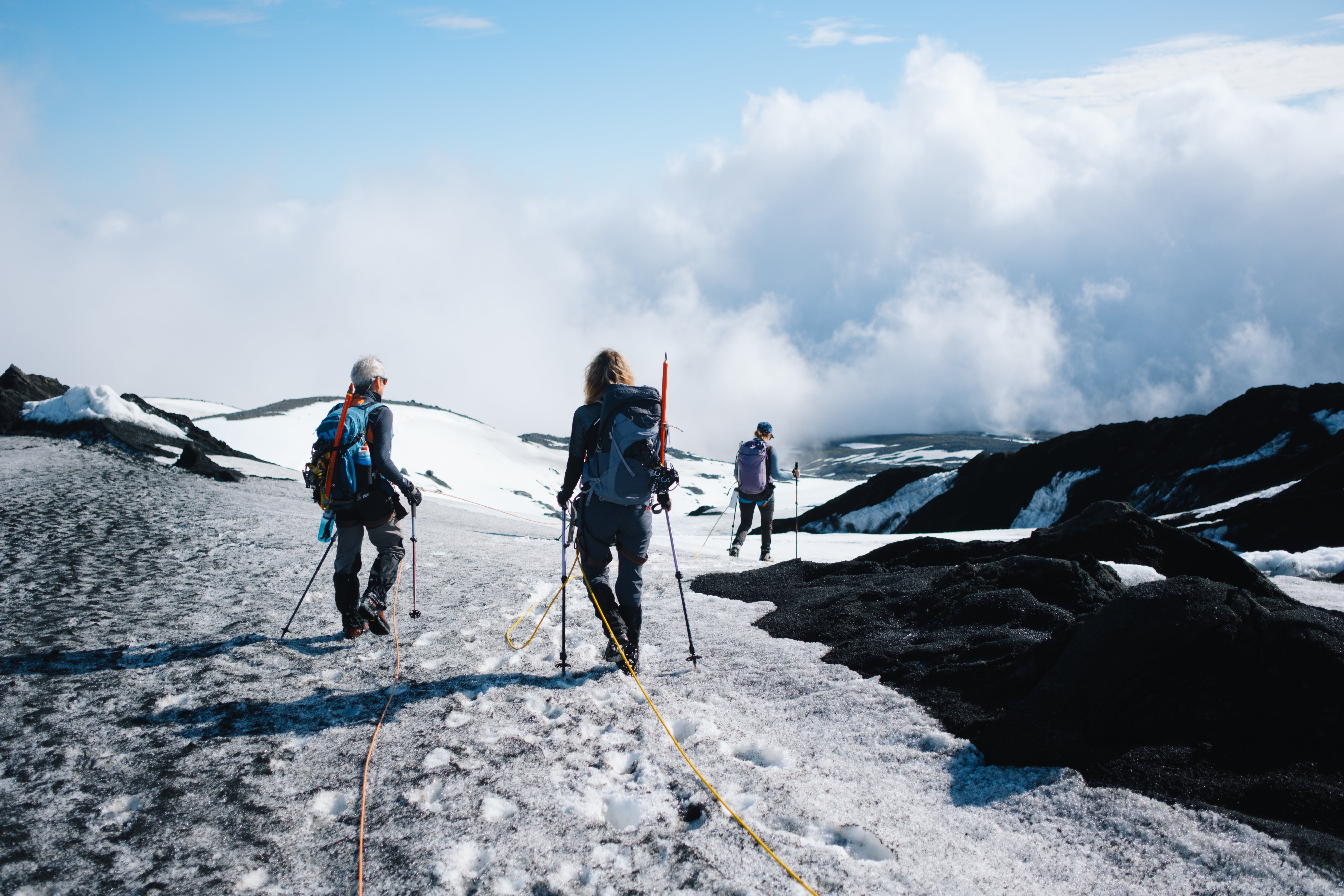
Like most glacier travel, summiting Eyjafjallajokull requires working as part of a rope team to protect against falling into crevasses, and on cold days crampons may be required while hiking on ice. For our group, on a sunny day in May with a little cloud cover, a solid pair of Gore-Tex lined hiking boots with gaiters sufficed.
Eyjafjallajokull wouldn’t have been on many travellers’ radars 15 years ago, but it quite literally exploded into the world’s consciousness in 2010. Around 100,00 flights were cancelled after the volcano sent clouds of ash and dust into the atmosphere, costing the aviation industry more than £1bn.
Read more: The ultimate Iceland travel guide
It also provided a considerable degree of amusement for Icelanders as news readers across the globe struggled with the near-impossible pronunciation of the name (if you’re curious, the correct pronunciation is “AY-uh-fyat-luh-YOE-kuutl-uh”). Despite the disruption and huge financial cost, Ivar speaks surprisingly fondly of the impact of the eruption. “In the long term it’s publicity,” he tells me. “Suddenly, everyone was talking about Iceland.”
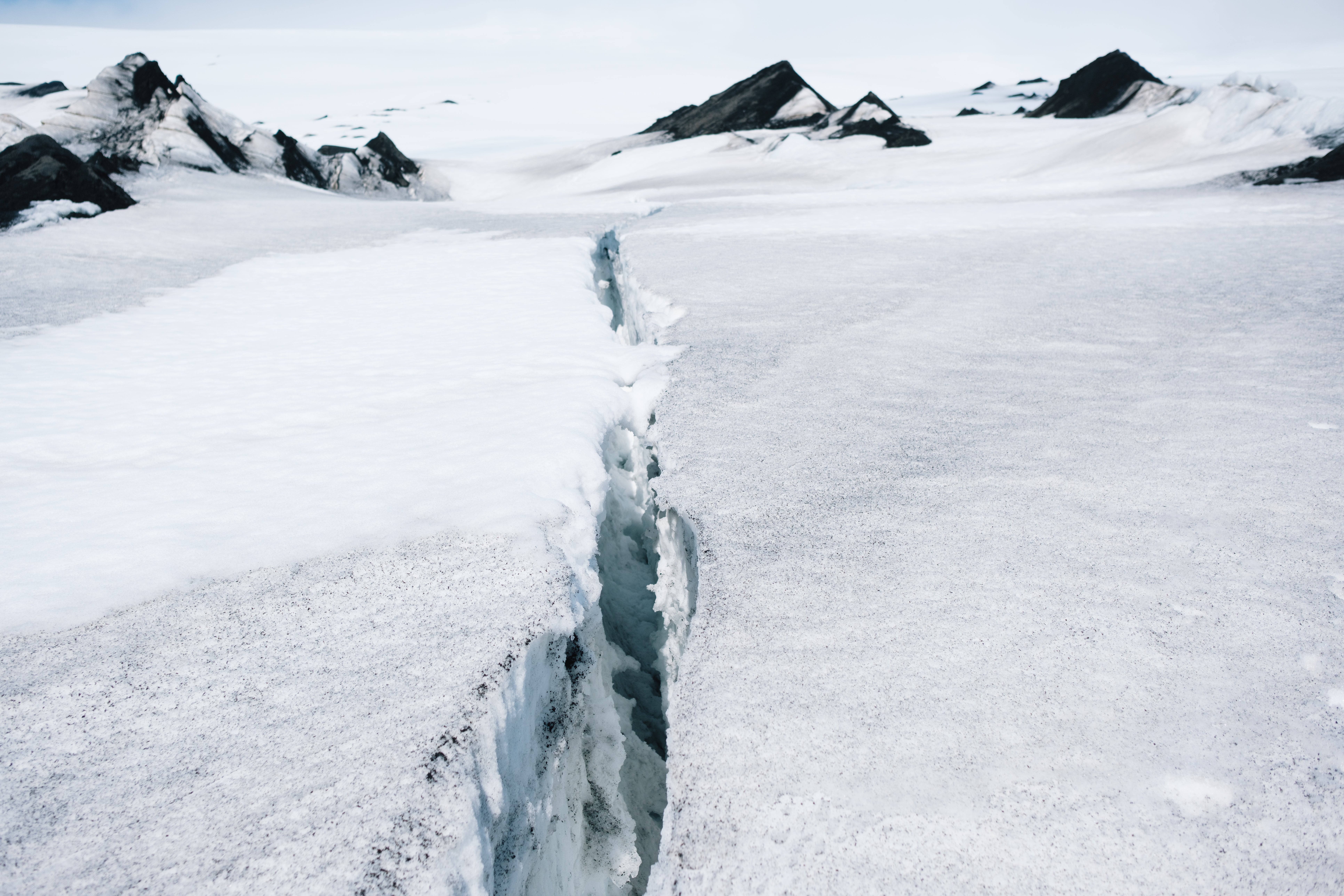
Just a couple of years previously, the country’s travel industry benefited from another global event that shook Europe, but unexpectedly gave Iceland tourism a leg up. Although the 2008 economic crisis hit Iceland hard, with a complete collapse of the banking system, it made the notoriously expensive country attractively affordable to visit, fuelling a quite staggering tourism boom.
But although Eyjafjallajokull did a rather nice PR job for Iceland tourism as a whole, Ivar notes that it’s still not well known for mountaineering.
Read more: The best time to see the Northern Lights in Iceland
“It’s not really popular,” he shrugs. “People haven’t really caught on – most tend to go for the high summit (Hvannadalshnukur). If they have just one day of glaciated travel on a rope, they go for the big one.”
Which is fair enough; but if you’re not too concerned about bragging rights and want the thrill of glacier hiking without a gruelling ascent, it’s well worth giving Hvannadalshnukur’s more famous, less intimidating neighbour a go.
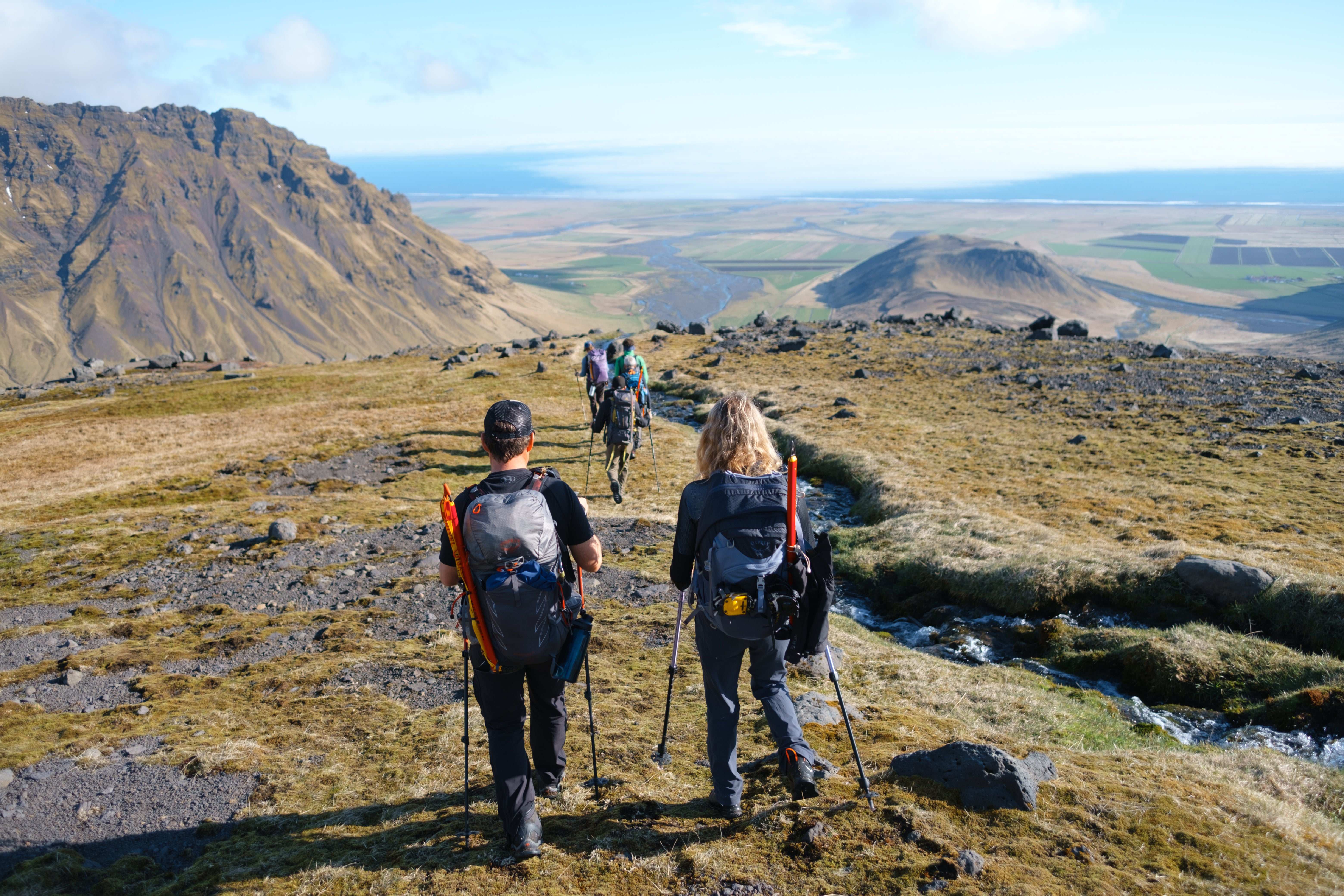
Where to stay
Hotel Skogafoss in Skogar is just 15 minutes from where you’ll start your climb at the base of Eyjafjallajokull, which makes it the ideal location to stay the night before and after the hike. It has the benefit of being located right next to the rather magnificent Skógafoss Waterfall, which is possibly the most famous waterfall in Iceland and one of the key sights to visit in the south of the country. The hotel itself is very comfortable, with pleasant double, twin and family rooms, and a decent restaurant that’s perfect for a post-climb dinner.
Reykjavik is just two hours from Eyjafjallajokull, where you’ll find a range of accommodation, including some more affordable options. Reykjavik Marina is a good mid-range hotel that’s ideally located for getting out of the city for outdoor adventures, as well as exploring the capital.
More reviews of the best hotels in Reykjavik
When to go
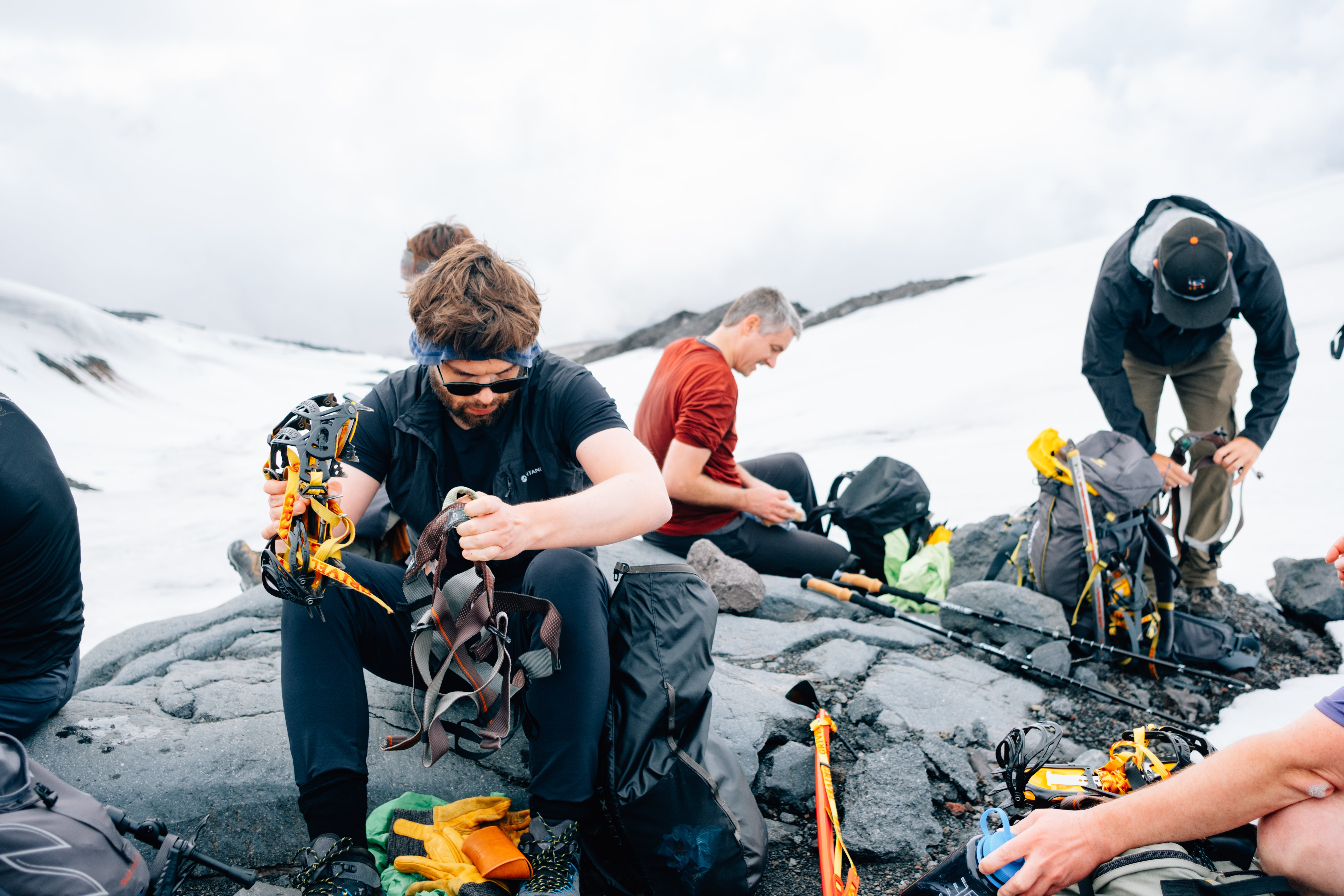
You can climb Eyjafjallajokull all year round, but late spring or early summer is the ideal time for inexperienced mountaineers. At this time of year days are long (around 16 hours of daylight), allowing plenty of time for hiking. The weather is famously unpredictable in Iceland – brilliantly sunny days give way to raging storms in a matter of hours – but in April and May there’s a good chance of enjoying clear skies and views of the glacier, plus pleasant hiking conditions that won’t require crampons.
Ascending Eyjafjallajokull in the winter is entirely possible, but around half the trip will be in darkness and you’ll need a good head torch. No matter what time of year you hike, always be aware of changing weather conditions, listen carefully to local advice and make sure you hike with a qualified mountain guide.
How to get there
Direct flights from the UK to Reykjavik are available on a number of airlines, including British Airways, easyJet, Icelandair, Wow air and PLAY. The flight time is around three hours. Eyjafjallajokull is around two hours by car or bus from Reykjavik.
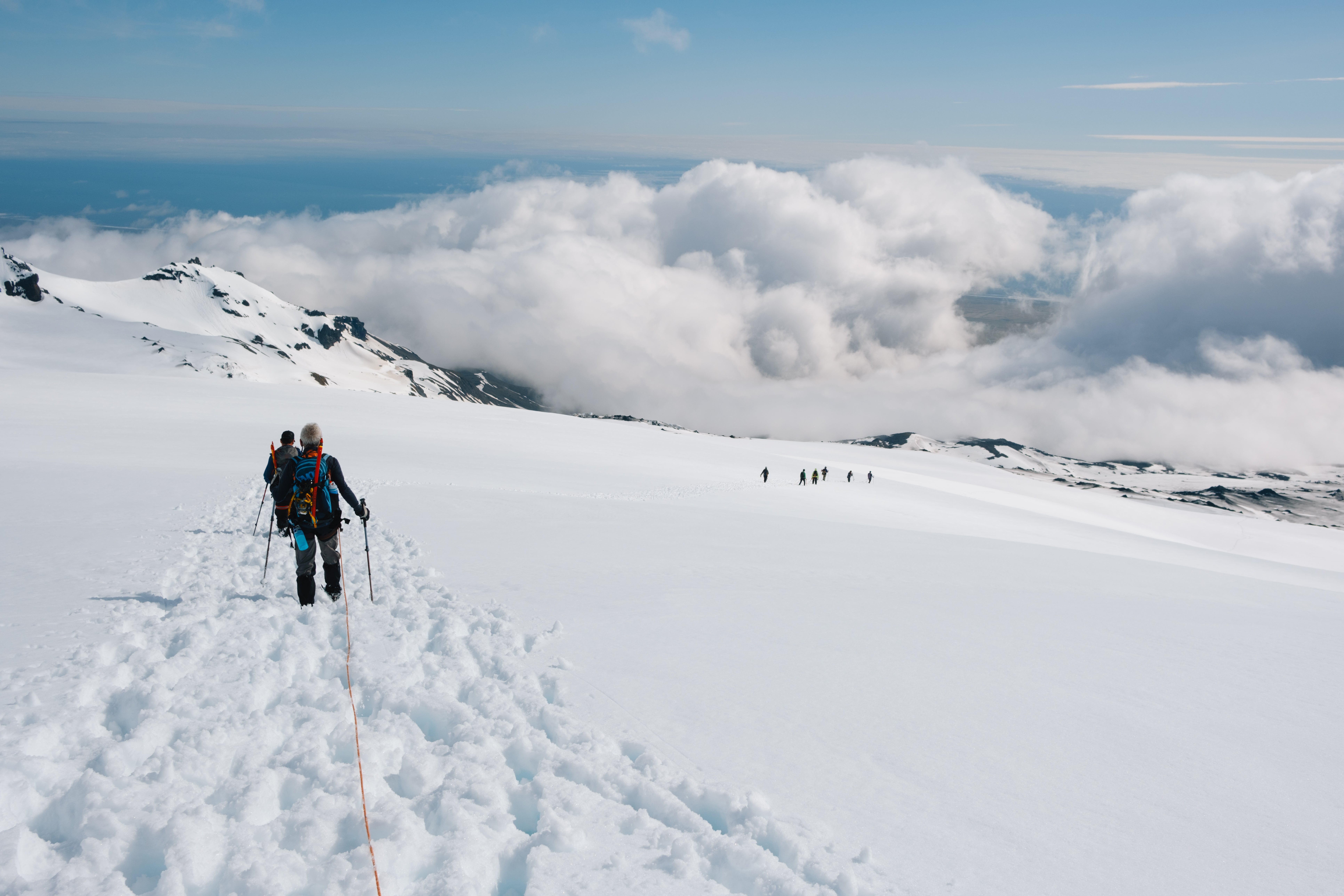
What to take
- Day backpack, 30-40L
- Down jacket with hood
- Waterproof and windproof jacket with hood
- Waterproof and windproof trousers
- Breathable wicking layers
- Fleece jacket
- Thermals (merino wool)
- Gloves
- Gaiters
- Socks, woollen or synthetic
- Buff or neck scarf
- Sunglasses
- Hiking boots with Goretex
- Hiking poles
- Sun cream
- Personal first-aid kit (inc. blister treatment)
- Water bottle x2 litre and/or bladder x2 litre
- Energy bars and snacks
Annabel climbed Eyjafjallajokull as part of the Much Better Adventures 3 Peaks Challenge in Iceland. The trip, new for Much Better Adventures in 2023, involves an ascent of Vorðuskeggi Peak (805m), Eyjafjallajokull volcano (1,651m) and Hvannadalshnukur (2,110m).
Join our commenting forum
Join thought-provoking conversations, follow other Independent readers and see their replies
Comments